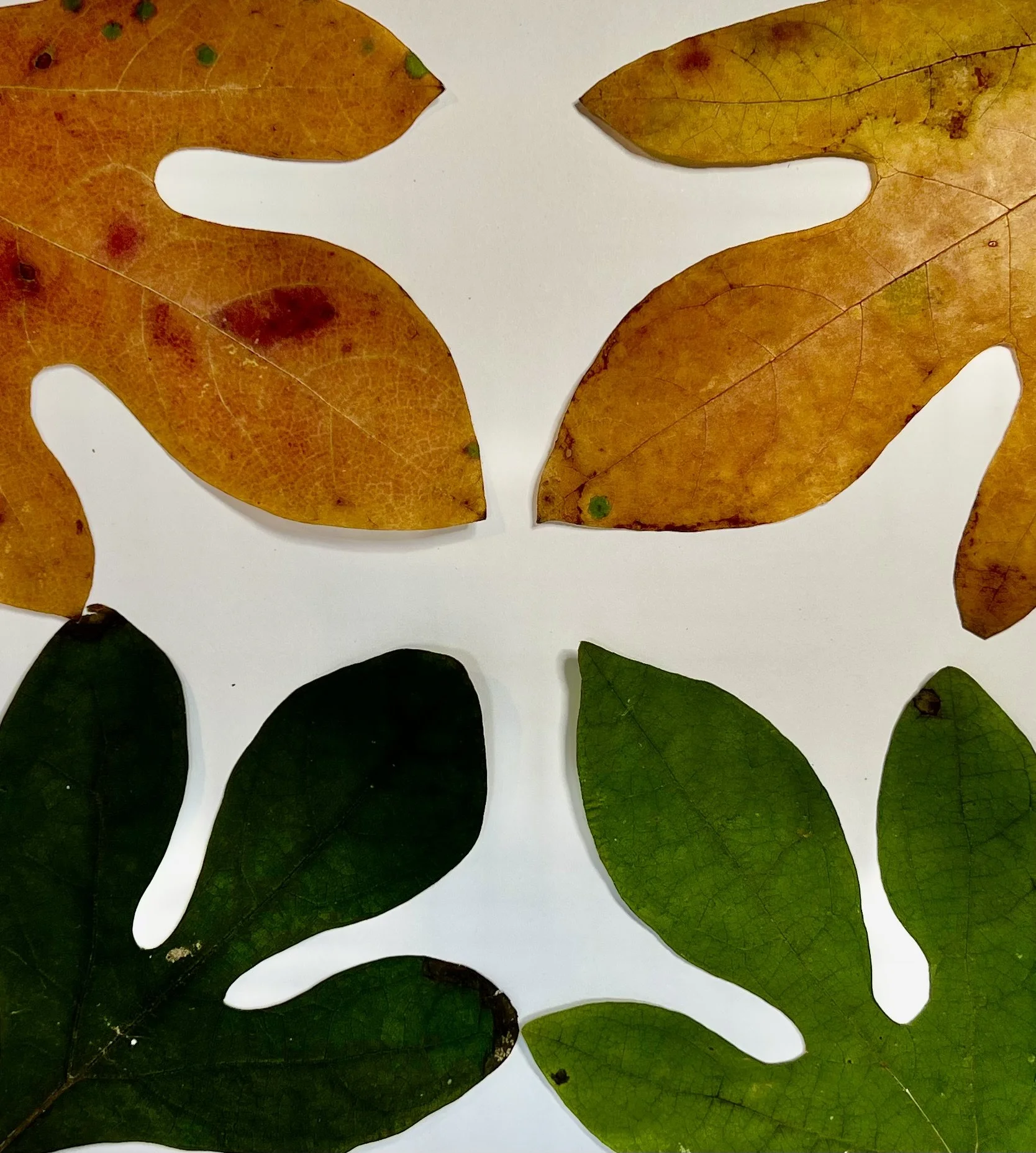Sassafras My A**, We’re Calling it Cape Cod!
Sassafras leaves in various stages of color.
“The fifteenth day we had again sight of the land, which made ahead, being as we thought an island, by reason of a large sound that appeared westward between it and the main, for coming to the west end thereof, we did perceive a large opening, we called it Shoal Hope. Near this cape we came to fathom anchor in fifteen fathoms, where we took great store of codfish, for which we altered the name, and called it Cape Cod.”
It was 1602 near present day Provincetown, and as a morning fog was lifting the sweet smell of sassafras wafted offshore to where the crew of the Concord sat at anchor gazing at a foreign land. A lowly mate recognizing the distinct smell exclaims “Behold! Cape Sassafras!” The captain of the vessel, Bartholomew Gosnold, retorted “Sassafras my ass, we’re calling it Cape Cod!”
Maybe it didn’t go down exactly like that, but it could have … Cape Cod could have just easily ended up as Cape Sassafras.
During a prospecting expedition to North America in 1602, the vessel Concord, captained by Bartholomew Gosnold, spent several weeks exploring the New England coast. They charted the area, traded for beaver skins, and harvested sassafras. At the time, sassafras was considered a tonic for a number of Old World maladies, including syphilis. As such, it was also the source of a highly lucrative New World trade in the early 1600s. It was the sassafras that had brought Gosnold and his crew to the region before heading south to Virginia. The harvesting of sassafras would fund their trip to North America in search of the ill-fated lost Roanoke colony. They never found the lost colony, but they found both sassafras and cod.
The discovery of an abundance of sassafras led to the Great Sassafras Hunts of the early 1600s. Two vessels, the Discoverer and the Speedwell, were commissioned by Sir Walter Raleigh to travel to the new world in 1603 to collect sassafras. Interestingly, the Speedwell would go on to factor in the Pilgrims history but that’s a story for some other time. Ultimately, the sassafras craze petered out when people realized that it didn’t travel all that well, and it just might be slightly poisonous when drunk in any quantity.
The New World cod fishery had a slightly longer run than the sassafras trade. With the discovery of vast quantities of cod throughout the Gulf of Maine, fishing villages began to form along the New England coast. Cod were harvested, salted, and exported back to Europe and fishing became one of the most important industries of the fledgling colonies. Today, 400 years later, Cape Cod still has an abundance of sassafras, though few cod. Like the Speedwell and the Pilgrims, the story of the collapse of the region’s cod stocks is a story for another day.
While the role of cod in regional lore is well entrenched, the role of sassafras is lesser known. If you find yourself wandering the sassafras forests surrounding Waquoit Bay, or elsewhere on the Cape, take a moment to reflect on the possibility of Cape Sassafras. The name probably wouldn’t sell as many t-shirts, and it would be a heck of a lot more difficult to maintain the Bourne Rotary topiary. Also, we’re already “Massholes” - I don’t think we need to add “Sassafrasholes” to the list of possible names the tourists can call us. And for all this, we have Captain Gosnold to thank.

